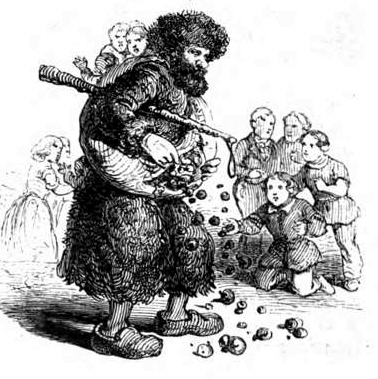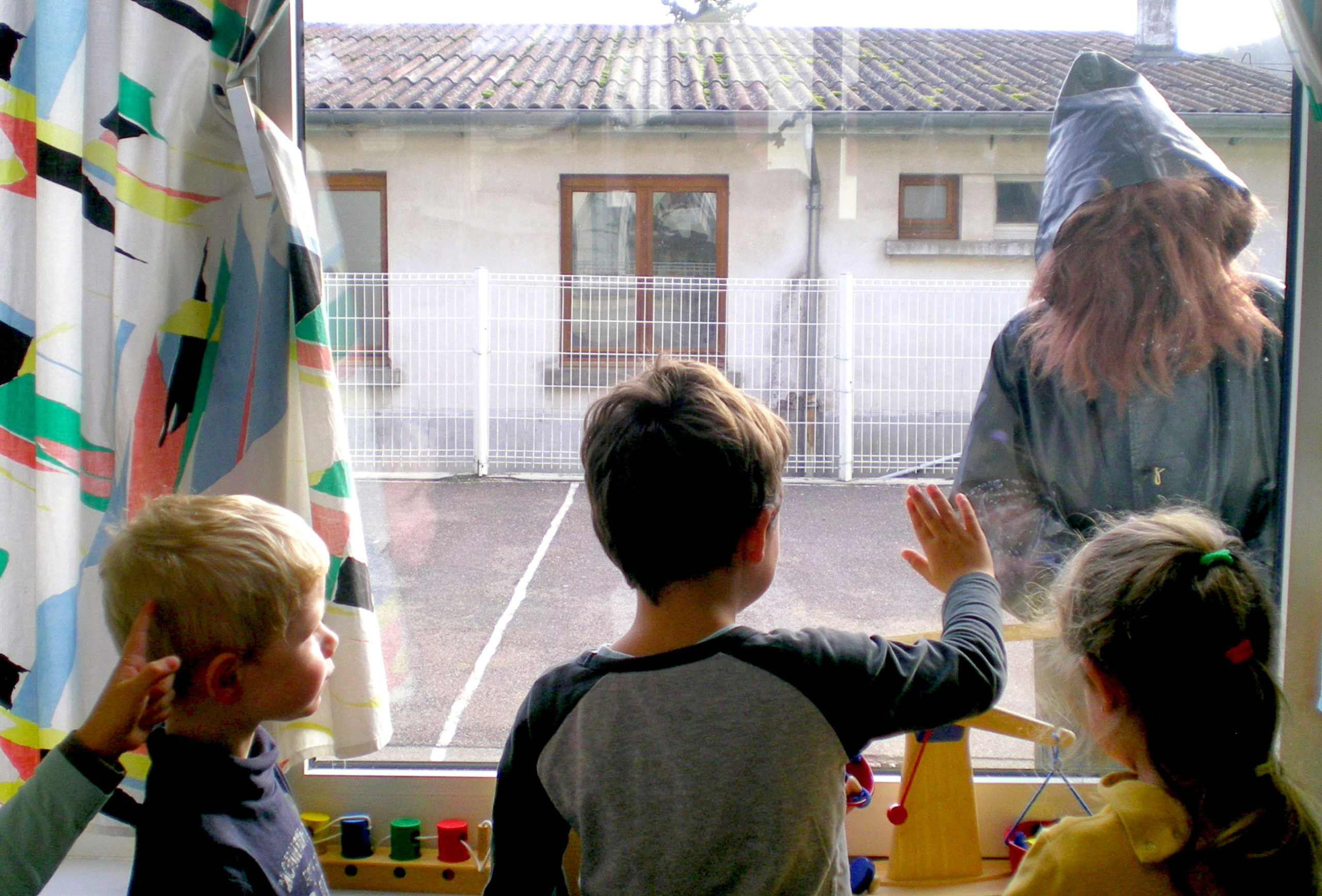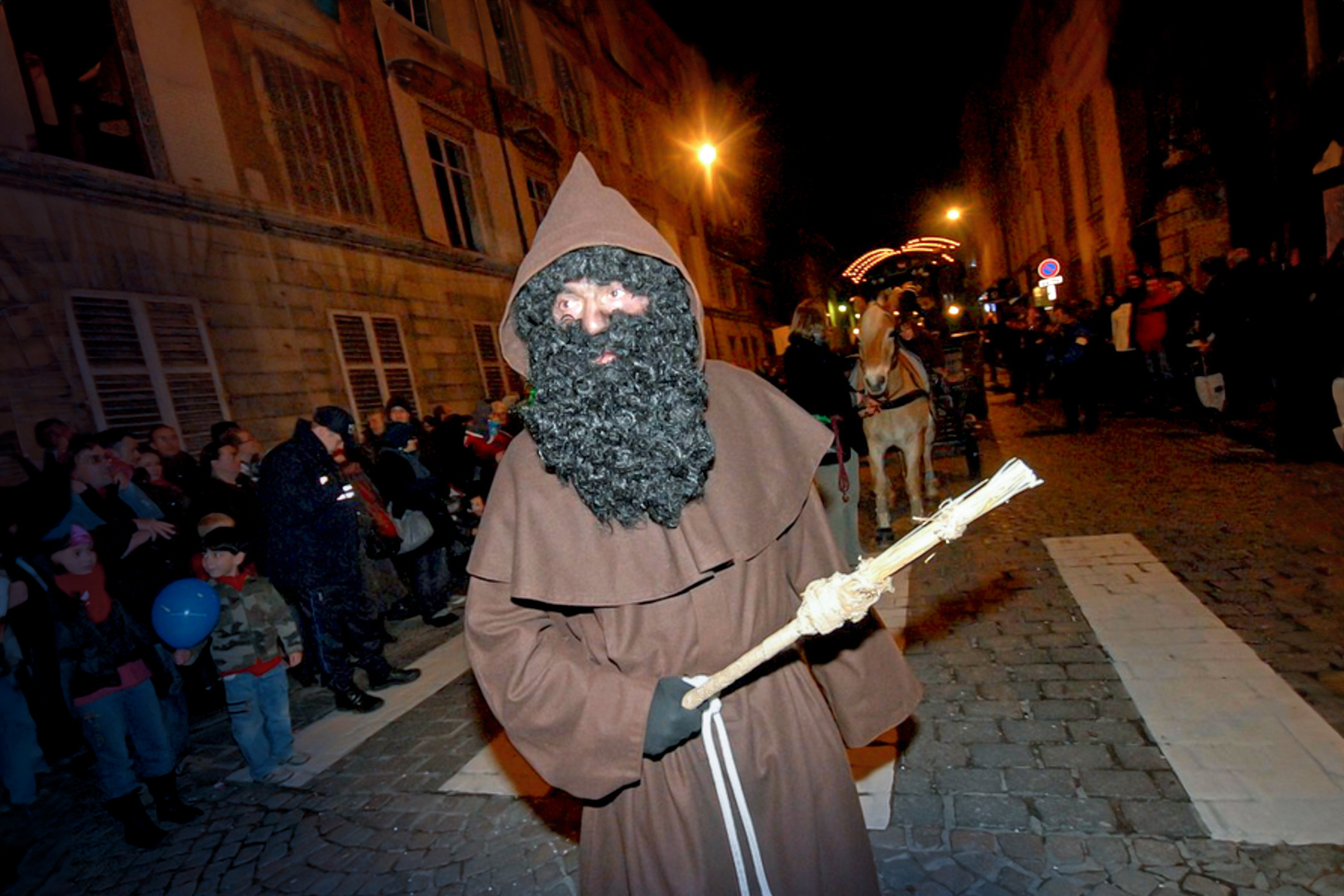When we saw his silhouette from afar, we were already terrified! As a child, I remember the visit of the sinister Père Fouettard. Fortunately for good children, Saint Nicholas was never far away. Père Fouettard is a legendary character in Christmas folklore in France and other French-speaking regions. He is often portrayed as the companion or evil counterpart of Saint Nicholas, the patron saint of children. While Saint Nicholas rewards well-behaved children by bringing them presents, Père Fouettard punishes disobedient or naughty children. Here’s a look at the bogeyman of our childhood nightmares…
Who is Père Fouettard?

- Saint Nicholas rewards children who have been good during the past year.
- Père Fouettard punishes naughty children.
It’s as simple as that—the presence of good and evil acting in the same place.
Mind you, Father Christmas is the only one without an evil companion. Santa Claus was stripped of this sinister role in the United States in the 19th century. It would have been counterproductive for marketing reasons.
Visits from Père Fouettard in Lorraine
Père Fouettard appears in the towns and villages of Lorraine alongside Saint-Nicolas on 6 December. This is the time of the holy man’s tour. He distributes sweets and gifts to well-behaved children.
His entrance into schools and homes has terrified generations of little Lorraine children. Imagine the scene: Père Fouettard’s job was to administer blows of the martinet (or whip) to disobedient or lazy children. The most recalcitrant and those who didn’t want to recite their prayers even risked being carried away by the fearsome bearded man in his big sack or hood.

The terrifying figure is responsible for intimidating the children by threatening them with punishment if they don’t behave properly.
Marie-Christine remembers Père Fouettard’s visit to Nancy in the 1960s:
“He was holding a whip, which we were told he used on naughty children. To my great relief, I personally never saw Père Fouettard do that. But I can tell you that we behaved like altar boys in his presence! We tried not to pay too much attention to his jeers. We had to contain our fear! Luckily for us, Saint Nicolas was there“.
In some regions, he could be ‘generous’. He would give naughty children coal, onions, peppers, beetroot, everything that children hate. If he’d wanted to punish me, he’d have given me salsify, chicory and Brussels sprouts!
A lover of noise
Far from being discreet, this terrifying character loves noise! So his entrance on stage during the St Nicholas procession doesn’t go unnoticed: the sound of chains, whips cracking, bells ringing, boots or hooves scraping the ground… the boldest spectators sometimes dare to raise their voices to boo him as he passes.
Where does he come from?
Two legends claim to explain the origin of Père Fouettard in Lorraine.
- The three little gleaners. These are the three little children who lost in the forest, found hospitality in the house of a wicked butcher. Once asleep, the butcher cut them into little cubes and put them in the salt cellar. Years later, Saint Nicolas visited the butcher and made him confess to this despicable act. Since then, the butcher has been obliged to assist St. Nicholas on his rounds and has become the bogeyman we know.
- The effigy of Charles V in Metz. The city of Lorraine lays claim to the birth of the bogeyman through a historical fact dating back to 1552. In that year, Charles V himself laid siege to Metz. To mock the emperor, the tanners’ guild came up with the idea of creating a grotesque effigy of the emperor with a whip. When Metz was liberated the following year, the mannequin was brought out again to mark the feast of St Nicholas. The people of Metz readily adopted this ridiculous “buttock tanner” who accompanied the holy man.
Today, the sad character hardly frightens children, who are far more inspired in their nightmares by watching television or the latest Disney movie! Although…
What does Père Fouettard look like?
Père Fouettard is generally described as a dark and sinister man dressed in rags and carrying a whip or rod.
![Saint-Nicolas and Pere Fouettard © böhringer friedrich - licence [CC BY-SA 2.5] from Wikimedia Commons](https://frenchmoments.eu/wp-content/uploads/2023/09/Saint-Nicolas-and-Pere-Fouettard-LR-©-bohringer-friedrich-licence-CC-BY-SA-2.5-from-Wikimedia-Commons.jpg)
In Lorraine tradition, Père Fouettard has several characteristics. To say the least, he is a dirty, repulsive and associable character:
- He is dressed in an oversized black coat and wears clogs or big black boots that make a lot of noise when he walks.
- His black-garbed face stands out beneath a long grey beard, shaggy hair and a hood.
- He holds a weapon that threatens children in his hand: a whip, branches or hammer; it’s your choice!
Where can you meet the bogeyman?
You’re most likely (or unlucky, depending!) to meet him in Lorraine. If you’re in the presence of Saint-Nicolas, then the sad sire will be in the vicinity. Watch out!

The origins of the character of Père Fouettard are complex and include elements from different traditions and legends. He is sometimes considered to be a French adaptation of the character of the Krampus, a demonic creature found in Christmas traditions in Central Europe, particularly Germany and Austria. Père Fouettard embodies the darker side of the Christmas season, reminding children of the importance of being good and obedient if they are to earn presents from Saint Nicholas.
The bogeyman-like villain goes by different names in different parts of Germanic Europe. And his attributes may differ slightly:
- Père Fouettard in Lorraine
- Hans Trapp in Alsace
- Rubelz or Rupp Knecht in German-speaking Lorraine
- Père La Pouque in Normandy
- Zwarte Piet in the Netherlands
- Knecht Ruprecht in Germany
- Pelznickel in the German Middle Rhine between Bingen and Bonn
- Krampus in Bavaria and Austria, looking like a “half-goat, half-devil”.
Discover Alsace’s Père Fouettard: the terrifying HANS TRAPP!
5 things you should know about Père Fouettard
As we’ve seen, the origin and history of Père Fouettard are rich in various influences and legends. To sum up, here are 5 important things to know about the history and evolution of the Children’s Terror:
1. Link with Saint Nicholas
Père Fouettard is traditionally associated with Saint Nicholas, the patron saint of children, famous in France and other parts of Europe. In Saint Nicholas stories, Père Fouettard is often portrayed as the saint’s dark companion, accompanying him on his visits to children. Saint Nicholas rewards well-behaved children with gifts, while Père Fouettard is responsible for punishing disobedient children.
2. Link with Krampus
One of Santa’s likely influences is the Krampus, a demonic creature found in Central European Christmas traditions, particularly in Germany and Austria. Krampus is usually depicted as a horned demon with claws, pitchforks and chains, and he punishes naughty or disobedient children at Christmas. The bogeyman shares some similarities with the Krampus, particularly in his role as a punisher.

3. Evolution of the character
Over the centuries, Père Fouettard has evolved and varied in his portrayal. In some regions, he is described as a man dressed in rags, carrying a whip or rod, while in others, he may have a more sinister appearance with a mask or horns. His primary function, however, remains the same: to frighten children into behaving correctly.
4. Symbolism
The bogeyman represents the dark side of Christmas. He reminds children that the festive season is also a time to reflect on their behaviour throughout the year. He encourages children to be reasonable and respectful by threatening punishment or charcoal.
5. Contemporary adaptations
Today, the image of the bogeyman can vary from one region to another and from one family to another. Some portray him as less frightening, even comical, while others maintain the tradition of presenting him as a sinister figure. Some children are still warned that the bogeyman might punish them if they misbehave.
In short, the bogeyman is a complex character whose origins are linked to various traditions and legends, with roots in European Christmas culture. He embodies the disciplinary side of the festive season, reminding children of the importance of being good and respectful to earn Christmas rewards.

Learn more!
- Discover 15 French traditions of Christmas
- Meet Saint-Nicolas on the blog!
- Explore the historic province of Lorraine
- Read this article in French on our blog Mon Grand-Est
Have you met the Père Fouettard? If so, let us know in the comments below!
Featured image: © M. Laurent – CRT Lorraine




